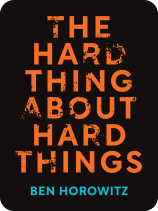

This article is an excerpt from the Shortform book guide to "The Hard Thing About Hard Things" by Ben Horowitz. Shortform has the world's best summaries and analyses of books you should be reading.
Like this article? Sign up for a free trial here .
What are the two kinds of managers? Which kind is better suited to be an executive or CEO?
There are two kinds of managers: ones are strategic decision makers and twos are process runners. Most founding CEOs happen to be ones, however, the ideal leader has elements of both.
Keep reading to learn more about the two kinds of managers.
Manager Types: Ones and Twos
There are two kinds of managers:
- “Ones” are strategic decision makers. They enjoy spending time reading and thinking, when they collect information about their employees, customers, and market, then come up with new strategic ideas. They’re comfortable making complex decisions on incomplete information. They tend to be flexible in changing goals.
- “Twos” are process runners. They enjoy having clear goals and optimizing processes around these goals. Twos like progress and motion over sitting down and thinking. They get more anxious about big decisions than Ones do. They tend to be more rigid in keeping goals.
Which type is best for a CEO? Ideally, she has elements of both. A One CEO without any Two capabilities will create a chaotic company. A Two CEO without any One capabilities will slow down decision making. However, in practice, Horowitz says that most founding CEOs are Ones.
Which type is best for executives? Ideally, they’re a hybrid of both—they’re Ones when running their own teams, but Twos at the executive team level. For example, a head of marketing would take direction on the overall company direction and how marketing fits into it, then make strategic decisions for marketing within those constraints. These are “Functional Ones.”
The best model for an executive team is a One CEO surrounded by Twos/Functional Ones. This allows for fast decision making and clear goal setting at the top, which is then carried into execution by the company divisions. In contrast, having One executives report to a One CEO can cause friction when the One executives make conflicting decisions.
This ideal model has a weakness—it makes CEO succession difficult. You have a few choices, all of which carry risks:
- Promote a Two executive to the CEO role: This leaves the company in charge of a process-oriented Two, which can slow down decision making and strategic flexibility. (Microsoft did this when replacing Bill Gates with Steve Ballmer.)
- Promote a One from a lower level: This is riskier than promoting a top-level executive, since the person is often younger and less experienced. Expect turnover from executives who will feel rejected; this can be crippling for a small company. (GE did this when promoting Jack Welch in 1981.)
- Hire a CEO from outside: Compared to promoting a CEO internally, this risks bringing in someone who has far less internal knowledge about the company and culture. The book Good to Great suggests that internally promoted CEOs do better than external hired CEOs for this reason.
CEO succession is always hard. The ideal is to promote an internal One to CEO and hope the transition goes smoothly.
Peacetime vs. Wartime CEOs
Companies can go through peacetime and wartime periods. The company needs a different type of CEO in each period.
Peacetime is when the company is handily beating its competitors and its market is growing. It can focus on further expanding the market and on strengthening the company. The company values creativity and diversity of thinking.
- An example is Google in the 2000s, when its search engine was so profitable and so competitive that it could carve out 20% of employee time on open projects and focus on blue-sky projects like broadening Internet access globally.
Wartime is when the company faces an existential threat. The threat is often external and can be caused by the macroeconomic environment, competition, changes in the supply chain. The company needs to do everything it can to survive and a limited window to do it. The company demands discipline and shuts down dissent that can compromise the mission.
- An example is Andy Grove’s Intel in the 1980s, which faced fierce competition in its core memory business from low-cost Japanese suppliers.
The CEO you need in peacetime is very different from the CEO you need in wartime.
- A peacetime CEO encourages creativity, dissent, and autonomy. A wartime CEO requires a militant focus on the mission and total agreement with the plan, and she micromanages to ensure it’s being executed.
- A peacetime CEO spends time on open strategic thinking and builds contingency plans. A wartime CEO often knows they have just one shot to survive and focuses all her effort on that.
Most management manuals are written about successful companies in peacetime. Very few are about what wartime companies have to do to survive, and so many CEOs don’t have training manuals on being a wartime CEO (Ben points out Andy Grove’s books as the rare exceptions).
At any given time, you need to know which situation you’re in and choose the right management style to execute it. It’d be a mistake to emulate Google’s famous perks and flexibility when your company is going to go bankrupt in three months.
Can a CEO be a good peacetime and wartime CEO? It’s possible but difficult. They require entirely different actions, and you need to know which situation you’re in and which rules to break.

———End of Preview———
Like what you just read? Read the rest of the world's best book summary and analysis of Ben Horowitz's "The Hard Thing About Hard Things" at Shortform .
Here's what you'll find in our full The Hard Thing About Hard Things summary :
- What it was like to head a company through the dotcom bubble and subsequent burst
- Why failing is normal
- How to build a good place to work






